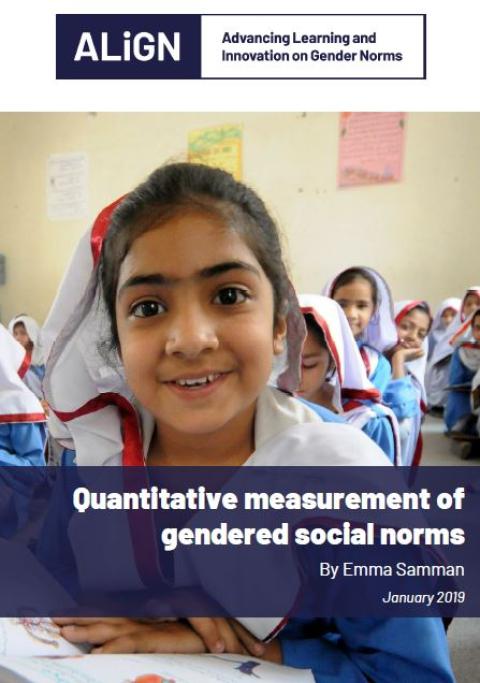- ALIGN guide
- 29 janvier 2019

Social norms often sustain gendered discrimination. At the same time, however, interventions that aim to shift those norms can become catalysts for change. The measurement of norms is critical in analysing both of these processes and is, therefore, attracting growing attention from researchers, policymakers and practitioners. This Guide provides an overview of quantitative approaches to measuring gendered social norms, drawing on both dedicated measures as well as indicators that are already present in large-scale existing datasets.
First, it describes the key measurable components of social norms – namely empirical expectations, normative expectations, sanctions, reference groups and individual attitudes and behaviours. It provides examples of how these have been captured through survey questions as well as the incorporation of vignettes into surveys. Second, it discusses how data on attitudes and behaviours can be used to signal the presence of norms, though such measures will necessarily be indicative rather than conclusive. To make this case, it gives examples of how indicators from major household survey instruments – including the Demographic Health Survey, Multiple Indicator Cluster Survey and Living Standards and Measurement Survey – have been used to suggest the potential hold of norms. It also describes how data on perceptions, administrative data and increasingly, Big Data can provide relevant insights. However, the Guide notes that the field is still in each early stages, with much more experimentation needed to develop standards and methods, to validate them, and to link measures of norms and outcomes. Finally, it cautions that quantitative approaches to norms measurement should not be adopted in isolation from other approaches. Rather, diverse approaches are essential.
- Countries / Regions:
- Global